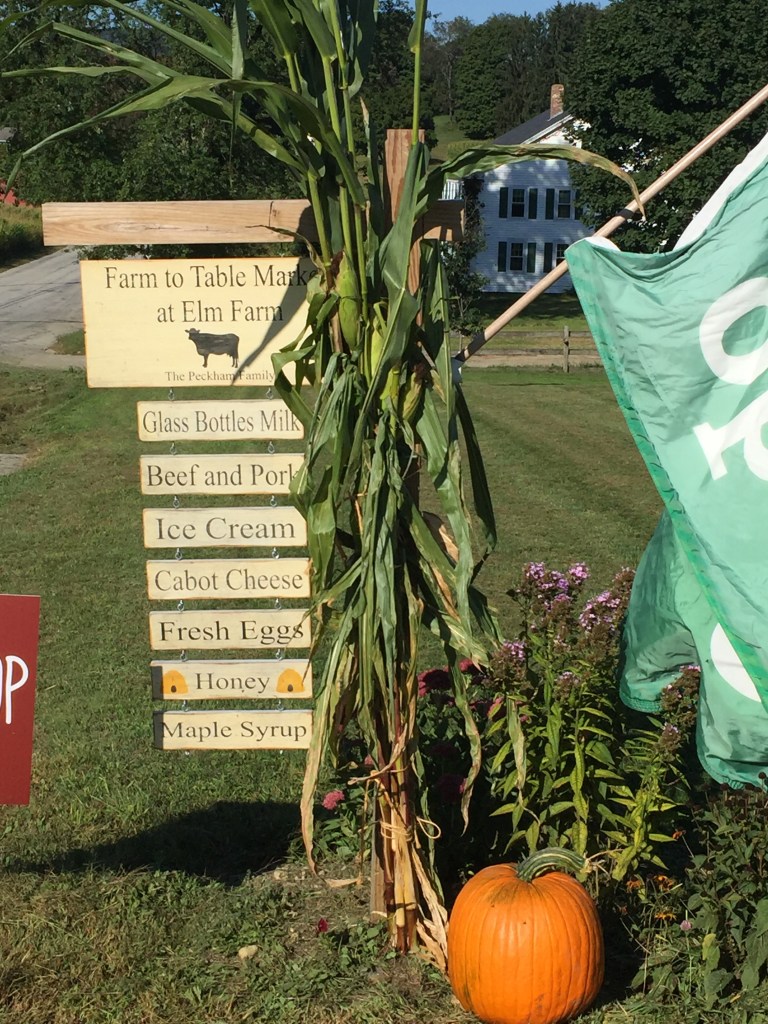What can churches learn from the farmers? Something new is happening on the farms and we ought to be paying attention. Here in the picturesque “Quiet Corner” of Connecticut dairy farms, vegetable fields, and orchards are no longer simply beautiful scenery to admire from afar. Visitors are invited to drive into farmyards and traipse through the growing fields to experience the farms first-hand. Farm-fresh eggs, freshly mixed yogurt, homegrown meat, milk (including chocolate!), apple cider, and a huge variety of fruits and vegetables are at our disposal. We can know – and see – where our food comes from.
It changes everything. Now we have the opportunity to chat with the hardworking folks who put food on our tables and we can ask questions of people who labor according to the seasons and whose lives are affected by the weather. We can see the cows, hear the roosters and sheep, stroll through blueberry patches, and wander through the apple trees.
The farmers are evolving with the times. It is no longer profitable or practical to grow their products and ship them all to a distributor. In response to the strong interest in the “farm to table” movement, they are inviting people to realize what is required to produce fresh food. They are discovering that people are willing to pay a bit more and drive a bit out of their way in order to benefit from delicious, local food.
Some of these farms are over 200 years old, but “innovation” is their mantra. Their enthusiasm for their products and their way of life is leading them to discover new ways to engage their customers.
The Woodstock Orchard opened up a bakery. Customers are greeted by enticing aromas of apple cider doughnuts, freshly baked pies and crispy turnovers. Apples are still the primary product, but customers can also find apples dipped in caramel and apple cider as well as a variety of vegetables, pumpkins, and flowers. Weary parents can grab a healthy treat for hungry children while doing all of their shopping in one location.

That same creative marketing can be found at the Creamery at Valleyside Farm. Inside the compact store visitors can view the workers in the backroom mixing up batches of yogurt and creamy dips. Don’t have time to stop? They brilliantly offer a drive-through window. Parents who can’t face another round of car-seat wrestling and teenagers in a hurry can glide up to the window and order milk, ice cream, and yogurt to go. Receipts are texted to their cell phones. This is not your grandfather’s farm; they are embracing the 21st century.

Down another backroad is – amazingly – an ice cream stand. The cute Farm to Table Market gives visitors the chance to stock up on farm products before they wander outside to enjoy creamy dairy treats while communing with the cows in a nearby field.

Churches can learn from the “can-do” spirit of the farmers. Society has changed and life is different than it was decades ago. Churches, like farms, need to adapt. The way it’s “always” been done may not work anymore. These farms are demonstrating a simple truth – we must find new ways to offer the valuable products we have. For farmers that might mean farm stands and new products. For churches it might mean creative scheduling and a willingness to dream of new ways to share Good News that the world needs to hear.
Stop by a local farm and be inspired.




